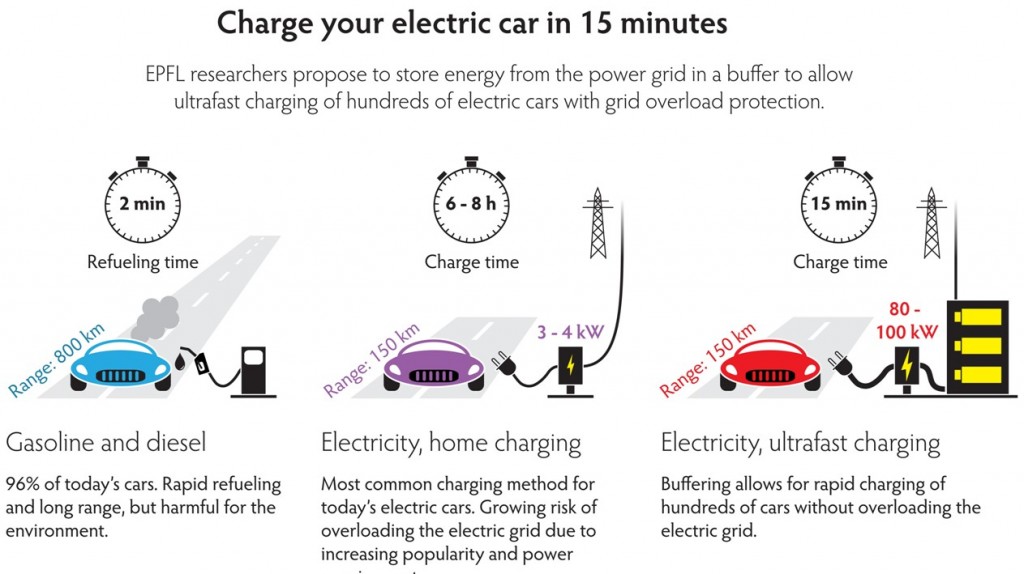A recent news release from the Ecole Polytechnique Fédérale de Lausanne discusses what’s involved in “Charging an electric car as fast as filling a tank of gas”:
Electric cars will be competitive when they can be charged in the time it takes to fill the gas tank. EPFL researchers have found the solution to this problem without bringing down the power grid: intermediate storage.
Electric cars will only be truly competitive when it doesn’t take longer to charge them than it does to fill a gas tank. The storage capacity of batteries is improving exponentially, but the power grid is the weak link: how could it possibly charge thousands of cars at the same time? This is especially problematic in the case of ultra-fast charging, which requires more than 10 times more power. EPFL researchers have found the solution: intermediate storage.
It only takes a minute and a half to put enough fuel into the tank of a diesel car to run for around 1,000 kilometers. After being charged for the same amount of time, the best electric cars will only go six kilometers. The only way to make the charging process faster is to increase the power flow going in. But such a quick charge would require 4.5 MW of power – equivalent to 4,500 washing machines. This would bring down the power grid.
EPFL also provide this infographic to help explain the idea:
The release quotes Prof. Alfred Rufer from EPFL’s Industrial Electronics Lab. as follows:
We came up with a system of intermediate storage. With this buffer storage, charging stations can be disconnected from the grid while still providing a high charge level for cars. And this can be done using the low-voltage grid (used for residential electricity needs) or the medium-voltage grid (used for regional power distribution), which significantly reduces the required investment.
and goes on to explain that:
Intermediate storage is achieved using a lithium iron battery the size of a shipping container, which is constantly charging at a low level of power from the grid. When a car needs a quick charge, the buffer battery promptly transfers the stored electricity to the vehicle. The grid is not even used.
To prove the system works, the researchers at the EPFL Energy Center and Industrial Electronics Lab built a demonstrator together with their partners from the Swiss Federal Laboratories for Materials Science and Technology (EMPA), the Swiss Federal Institute of Technology in Zurich (ETHZ) and the Bern University of Applied Sciences. The demonstrator is a trailer holding the intermediate storage battery. It draws power from the low-voltage grid and, in the space of 15 minutes, provides the 20 to 30 kWh needed to charge a standard electric car battery.
If you’re technically minded the UFCEV team also provide a handy bibliography of academic papers and presentations covering the concept.

